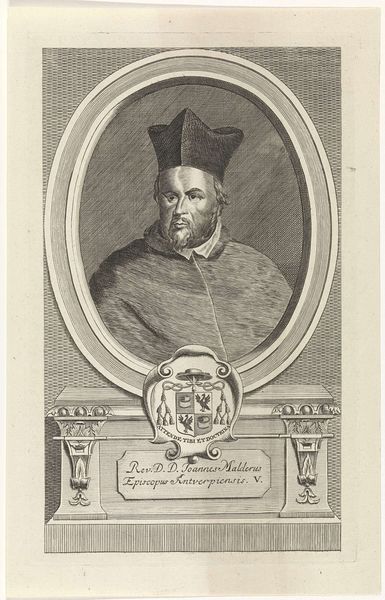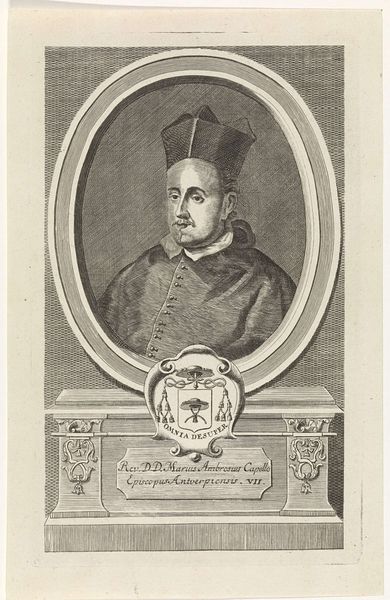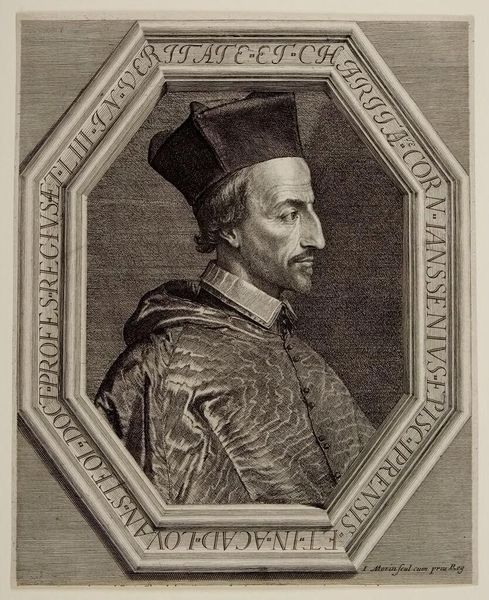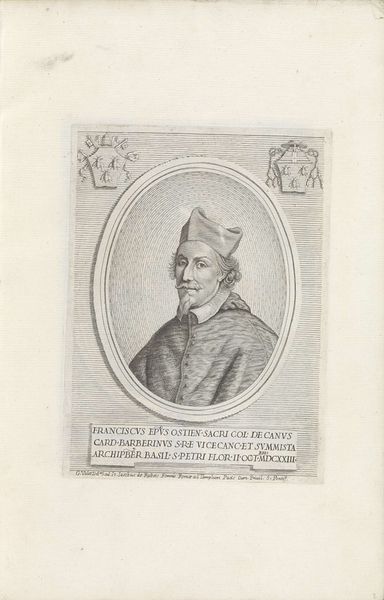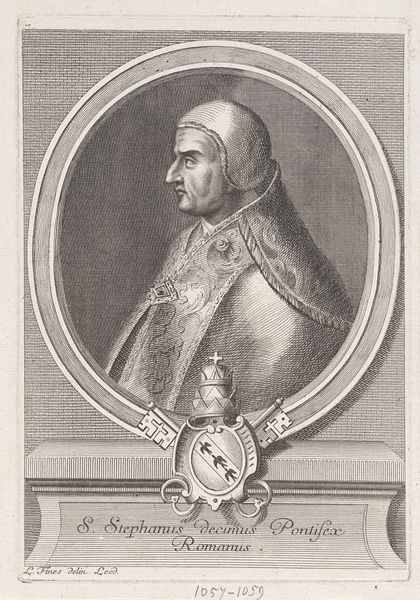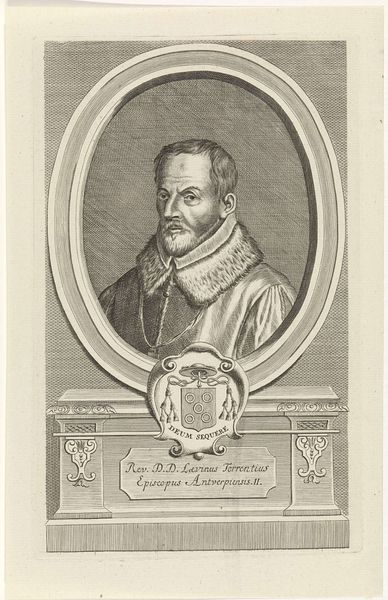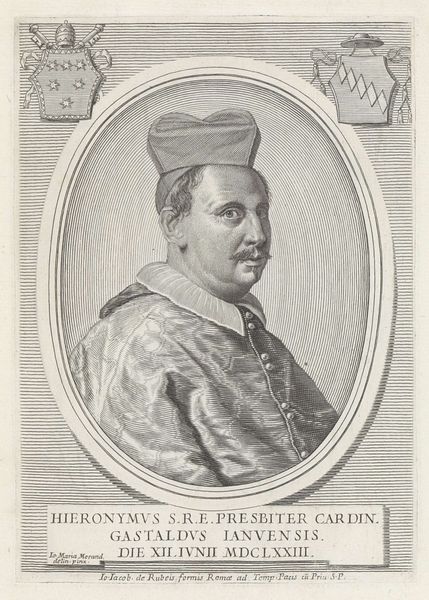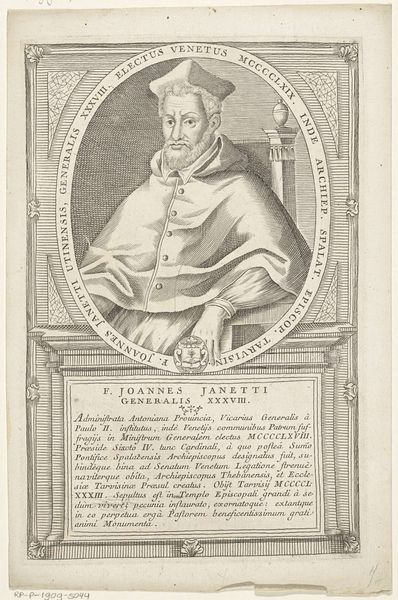
print, engraving
#
portrait
#
baroque
# print
#
old engraving style
#
caricature
#
engraving
#
realism
Dimensions: height 266 mm, width 164 mm
Copyright: Rijks Museum: Open Domain
Curator: Look at this print, likely created between 1710 and 1725 by Jan Baptist Jongelinx. It’s a portrait of Johannes Miraeus. I find myself wondering about the choice of rendering such a man in monochrome; does it capture him, or freeze him? Editor: My first impression is of...dignified amusement. The eyes hint at a hidden smirk, even as the attire speaks of high office. And the scale is perfect, capturing the individual but hinting at his larger role. There is a sense of self-importance in this man but the image teeters on the brink of caricature, isn’t it funny? Curator: Oh, absolutely! Notice the elaborate coat of arms beneath the portrait – a visual testament to his lineage and power within the church. Those symbols would have been instantly recognizable to his contemporaries. Editor: Symbols layered upon symbols! The hat is, of course, an instant marker of his Bishopric, but the framing—that almost stage-like oval—presents him as an actor, or a figure to be watched, someone playing to an unseen audience. Curator: It’s fascinating how Jongelinx balances the realistic details of Miraeus’ face with the idealized setting. This piece lives in the Baroque style—full of dynamic curves and ornate flourishes. Even the lines creating the textures in his garments are meticulously done. Editor: What strikes me is the cultural memory embedded in portraiture itself. For centuries, these images served to preserve status, influence, and presence across time, especially for people who commissioned artworks like these. Today, the context might have evolved, yet the symbol lives on. Curator: Yes, exactly, it asks so many questions! Who was this man, really, beyond the office and the status? Was he truly devout, or more a shrewd politician? Was he compassionate? One can look for clues, in the soft etching lines in his face, and the twinkle of his eye, the slope of his collar. The artistry draws me into considering him, pondering his story, and finding my own narrative nestled inside his. Editor: Absolutely. Even though removed from that period, and unfamiliar with its societal and visual norms, through this etching, he peers out to us. These glimpses into the lives of people and society help the past merge with our perception of our reality.
Comments
No comments
Be the first to comment and join the conversation on the ultimate creative platform.

